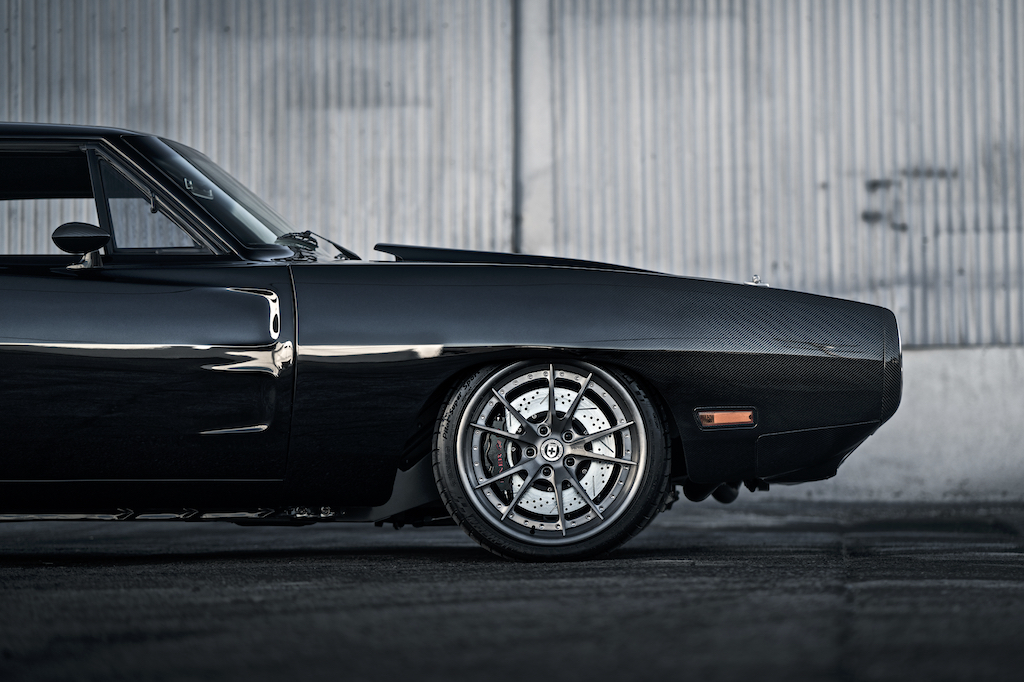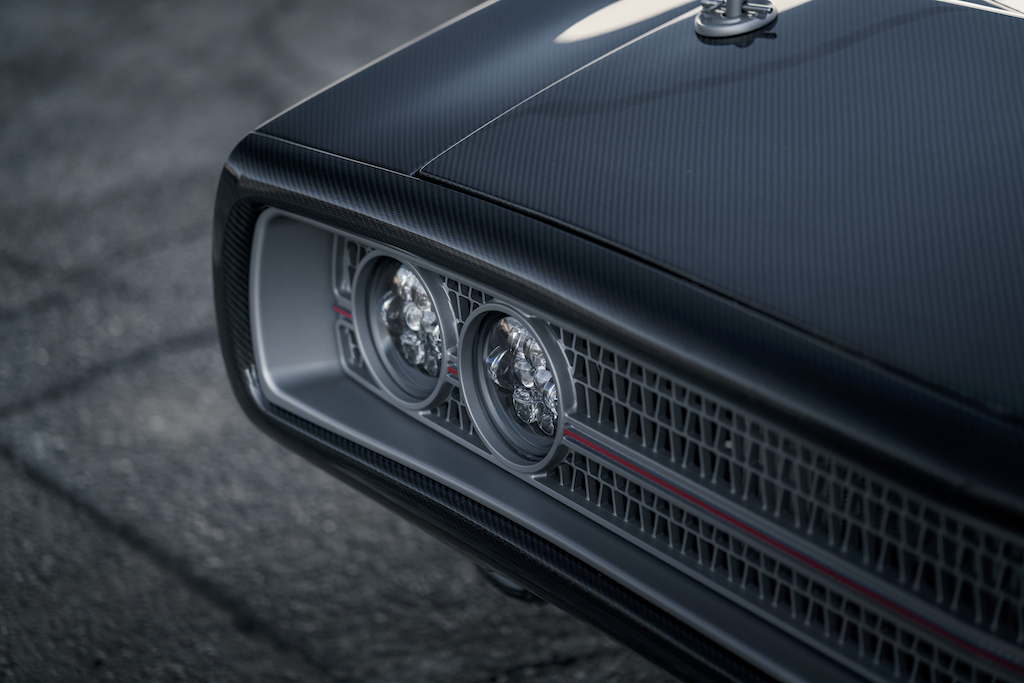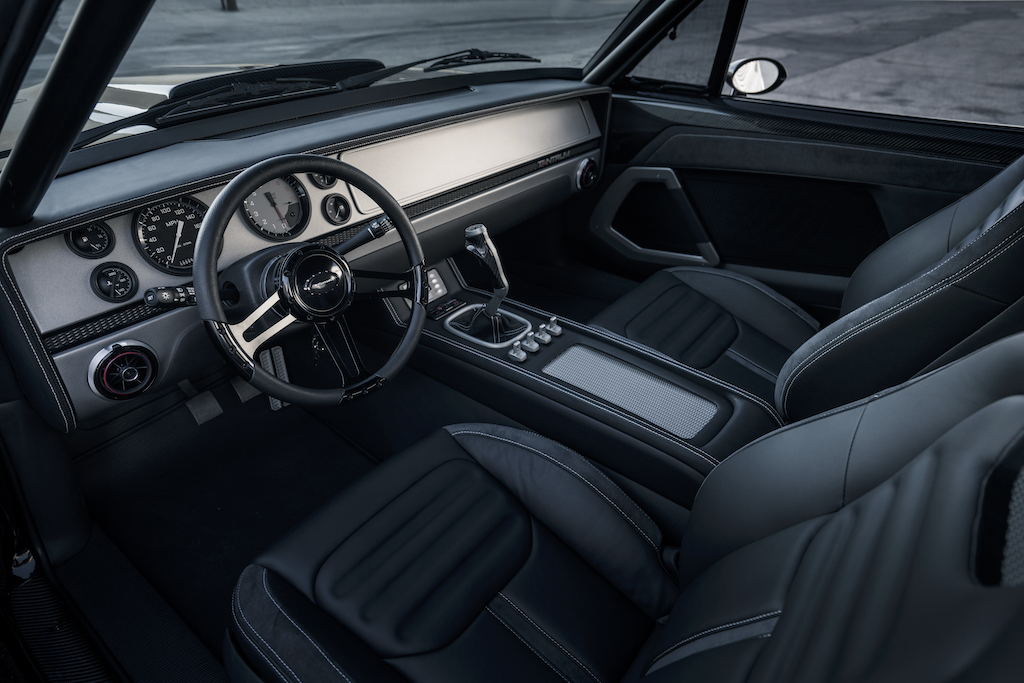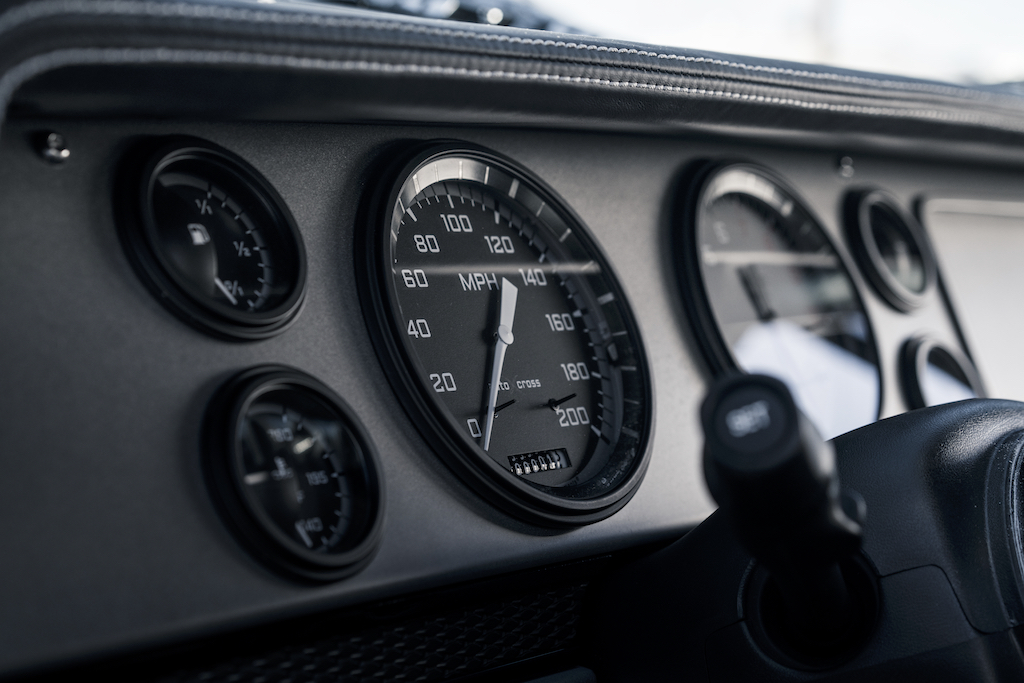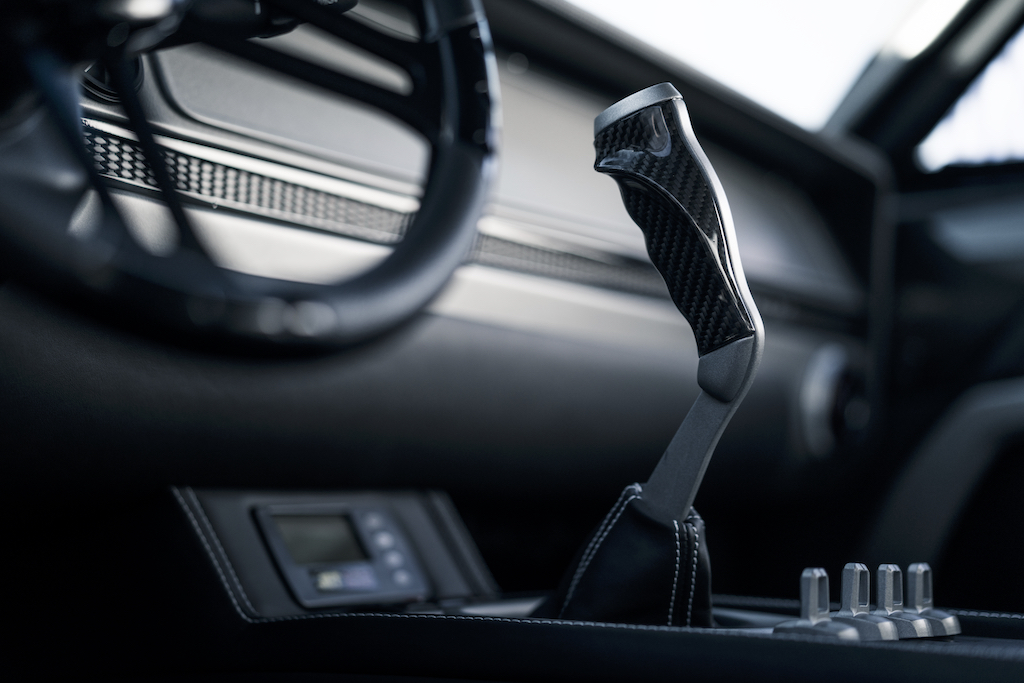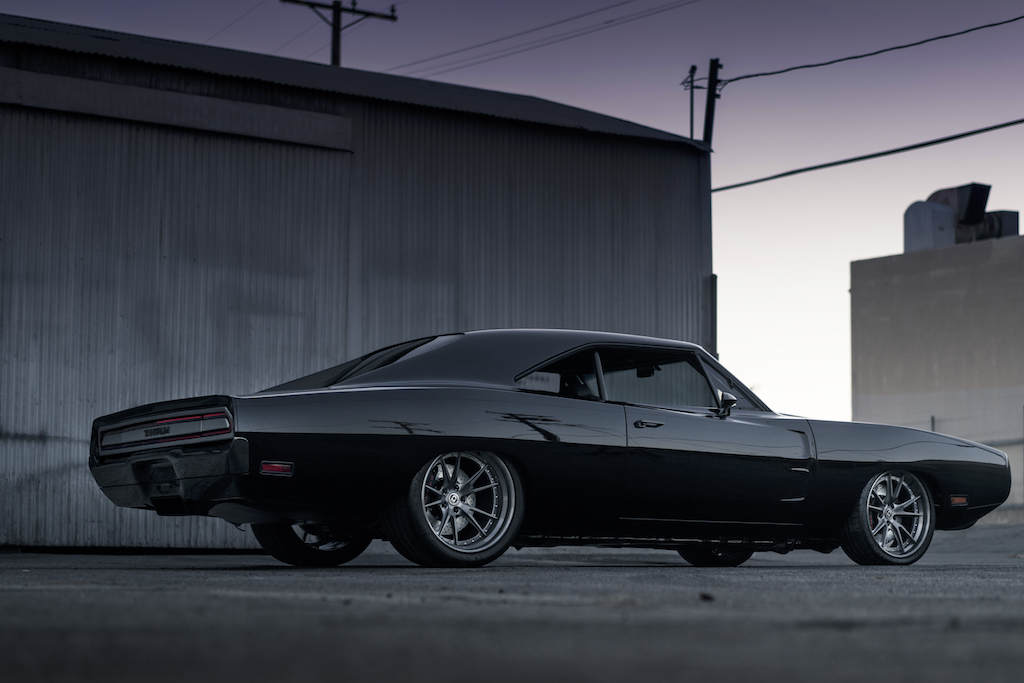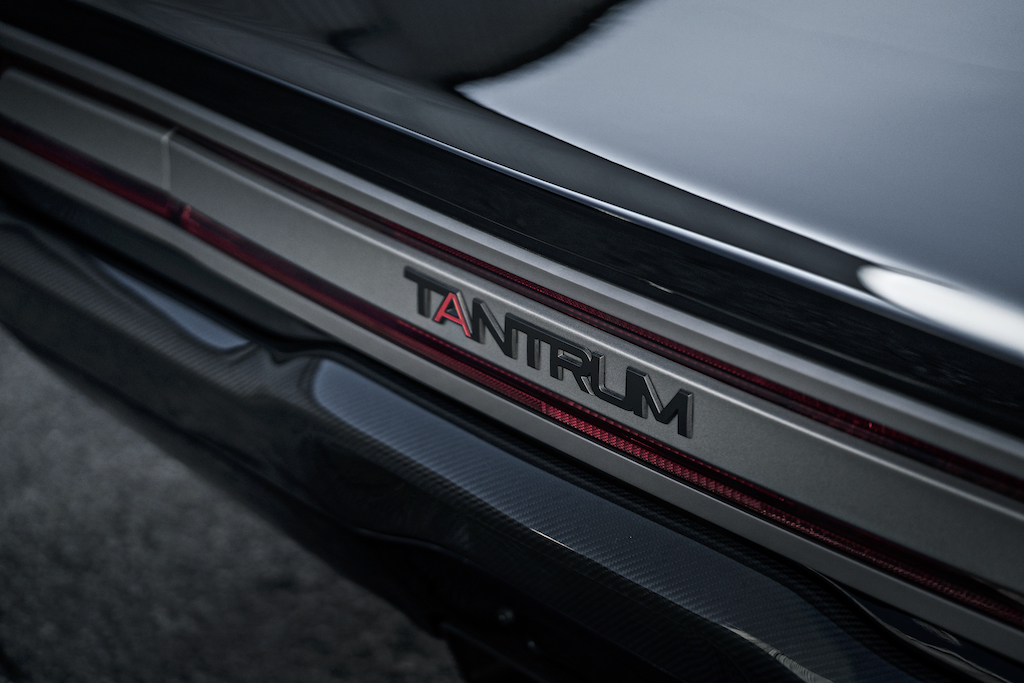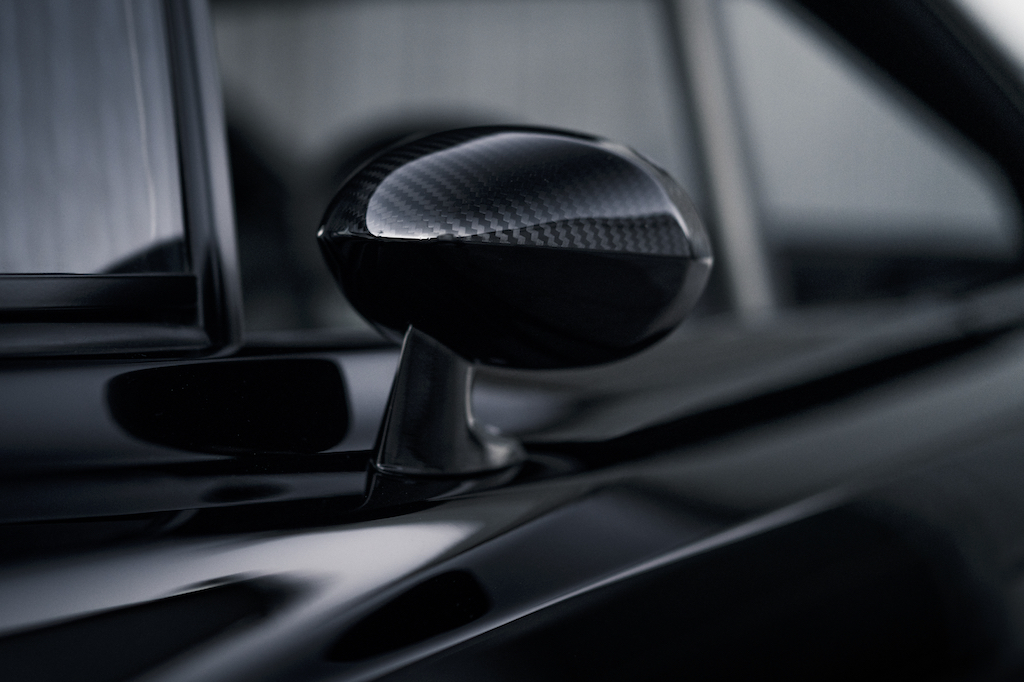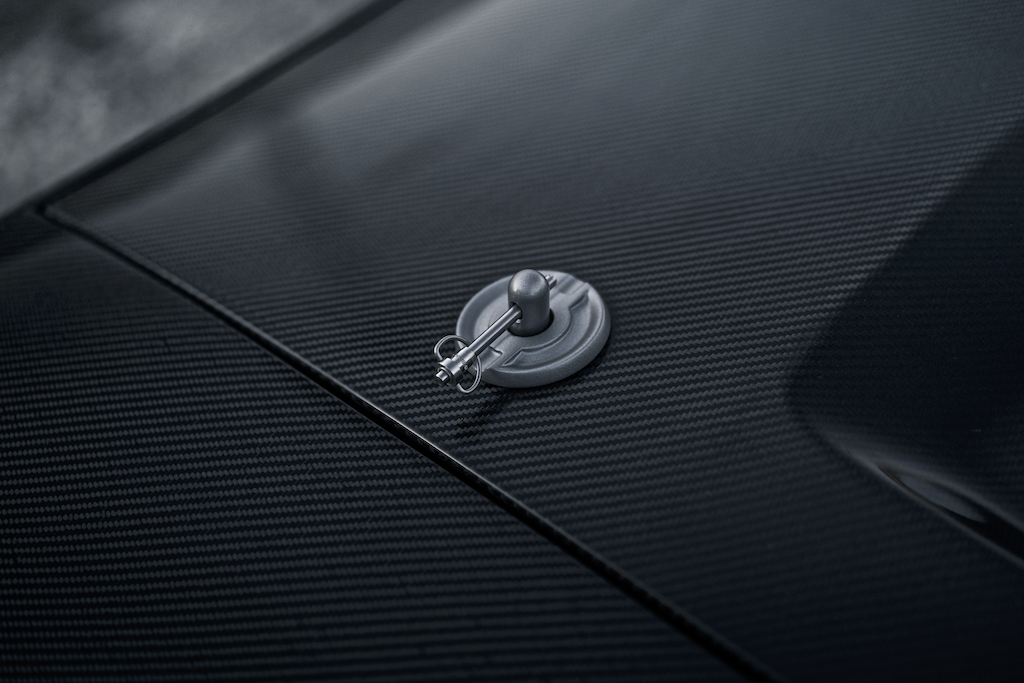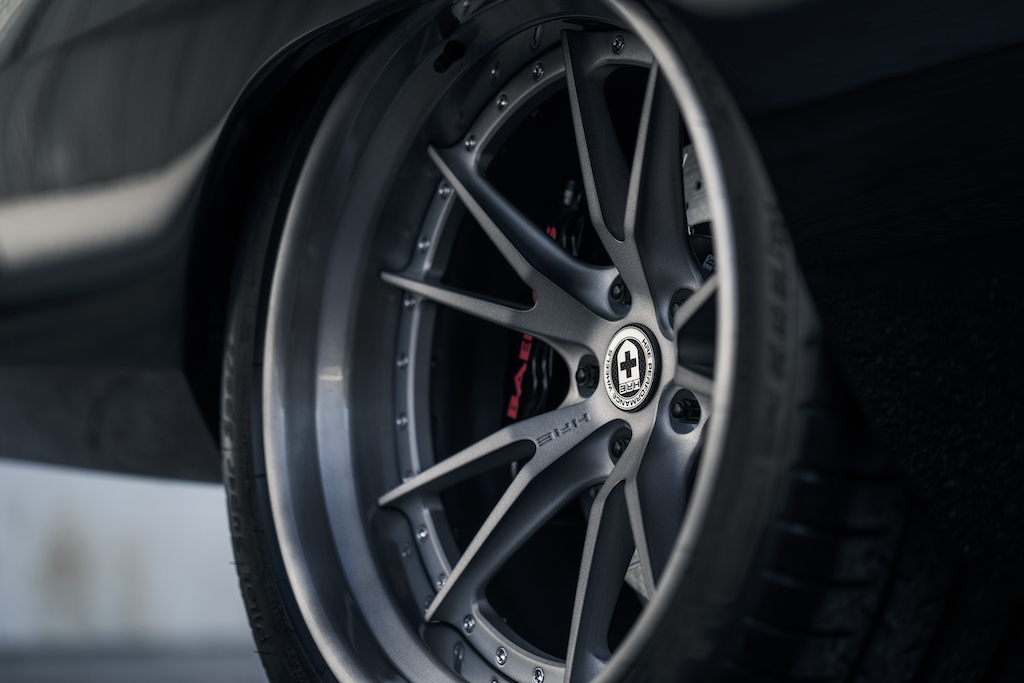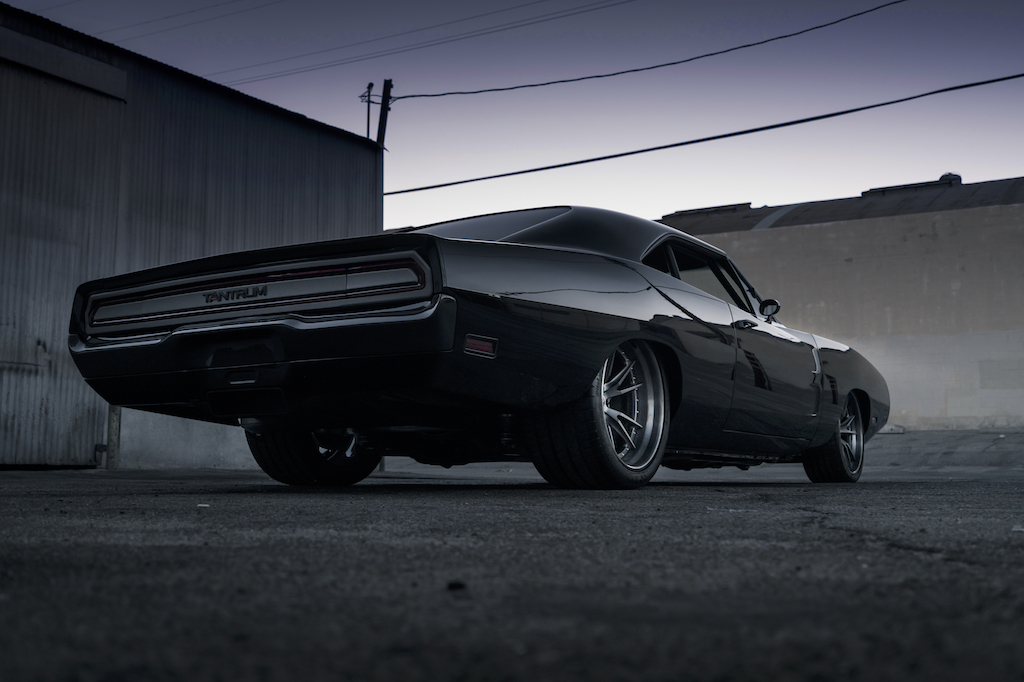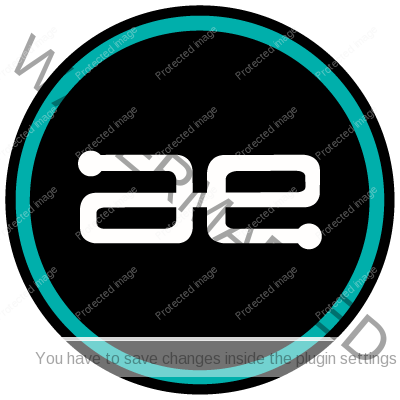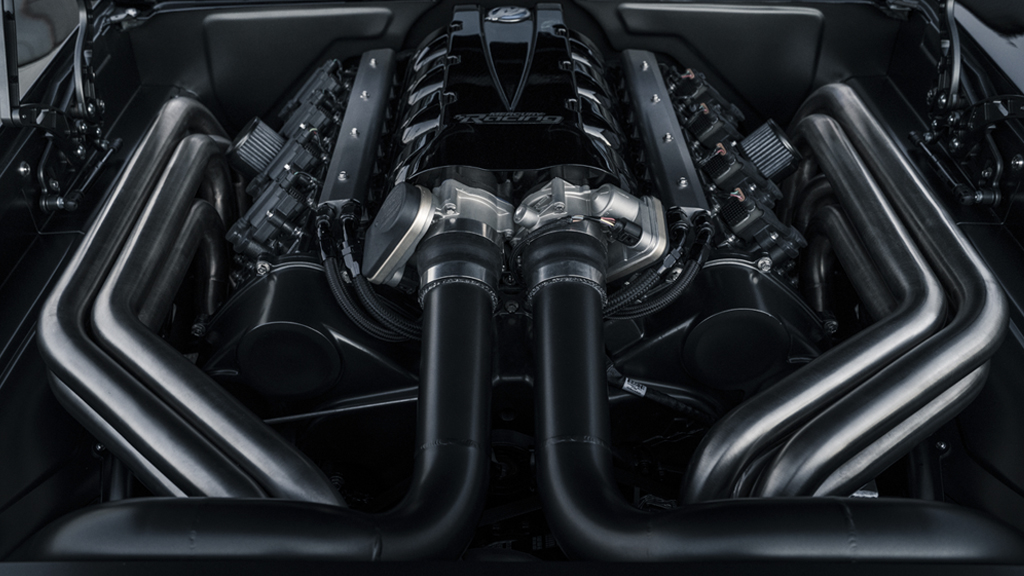
Show stopper. SpeedKore Performance’s TANTRUM is a 1970 Charger 1650hp Beast.
Pro Touring cars—a.k.a. “restomods”—have become a passion-fueled art form of late, and honestly, they don’t get better than SpeedKore’s stunning ’70 Dodge Charger–based “Tantrum.” Done by the same Wisconsin shop that produced an unforgettable 1970 Plymouth Barracuda for the Furious 7 movie, the Tantrum was built to showcase SpeedKore’s breadth of talent with materials and design. Hence, the Charger has been reconsidered and redesigned in almost every respect.
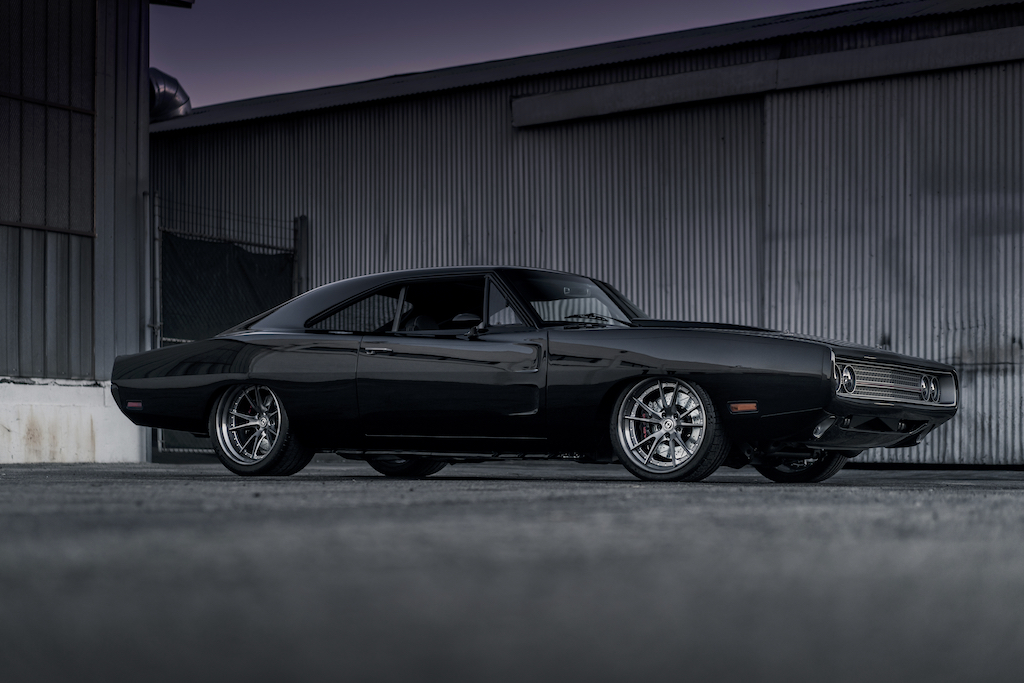
First, this thing is really beautiful. The Tantrum’s smoothed, lowered body dons many custom-built pieces, not the least of which is its all-new front-end bodywork rendered in carbon fiber. The weave gleams through a glossy finish at the front before gradually fading to a mirror-like black over the hood and front-wheel arches. The intricate grille has been milled from a single block of aluminum and houses four LED headlamps. Out back, the tail-lamps come from a 2014 Dodge Challenger and are partially covered by a trim panel emblazoned with the car’s name, while the mirrors, door handles, and fuel-filler cap are all custom made. Stuffed into the wheel wells are HRE S104 wheels measuring 19 inches in front and 20 inches out back, with 14-inch Baer brakes tucked behind them.
There’s plenty more metal and carbon fiber to behold inside. Indeed, most of the panels are rendered in carbon fiber, some left exposed while other bits are wrapped in leather, microsuede, or both. The seats and dash are custom, as well, yet despite the modern materials, nothing strays too far from the original Charger aesthetic. A roll cage has been fitted and integrated with the structure for reasons that will seem obvious when you learn what’s under the hood.
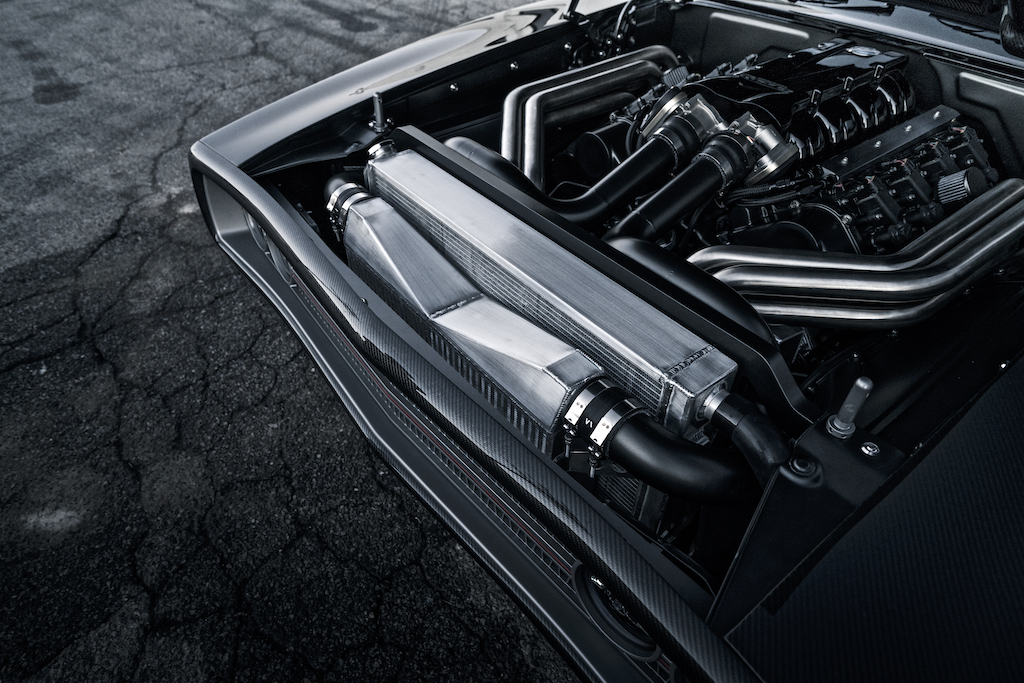
That is a DOHC, 9.0-liter twin-turbocharged Mercury Racing V-8 QC4v crate engine churning out a massive 1650 horsepower. Yeah, that’s Mercury Marine as in the boat engine builder. Even after making its way through a Tremec six-speed manual transmission and massive, Ford-sourced rear differential, that’s more than enough power to vaporize the Tantrum’s 345-series rear Michelins in seconds. Incidentally, fitting that huge engine required that much of the car’s underlying structure, including the frame rails and floorboards, be redesigned, as well.
